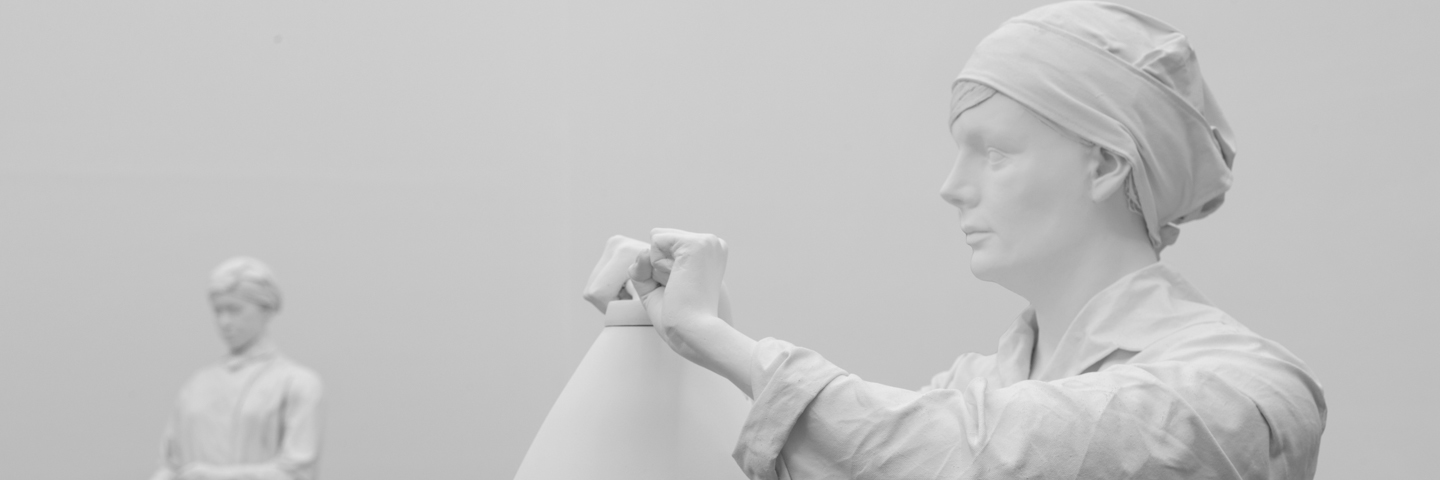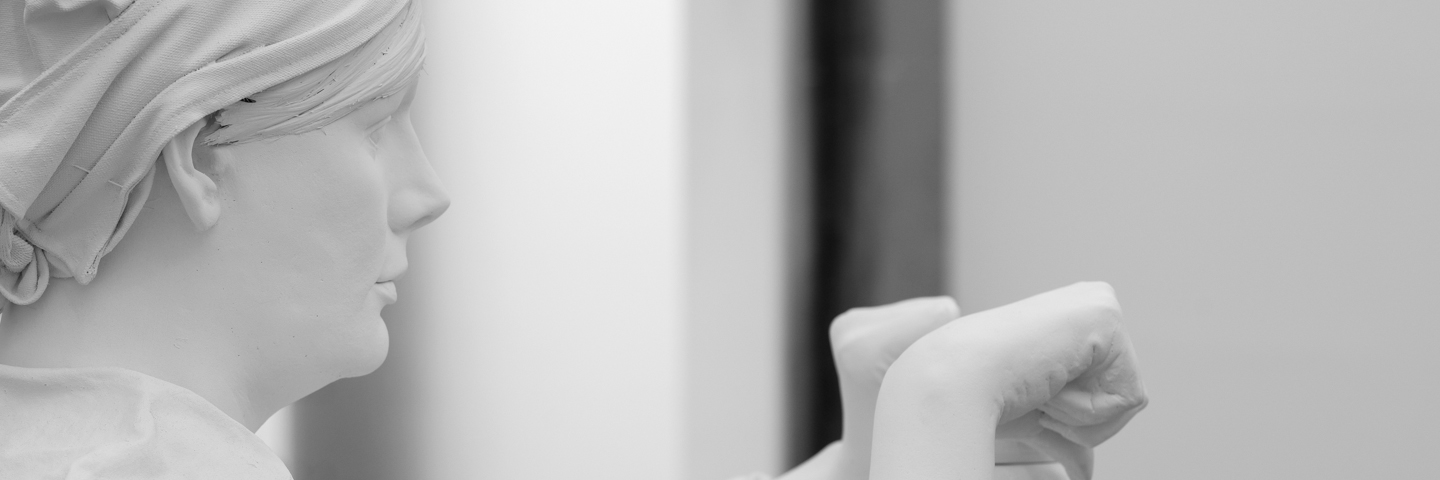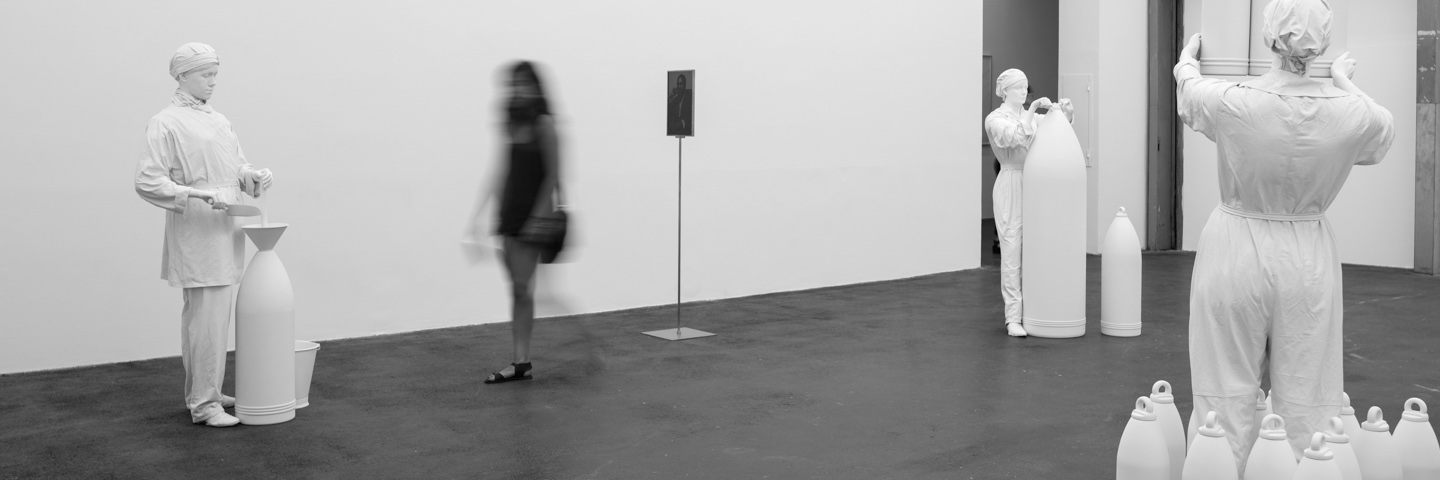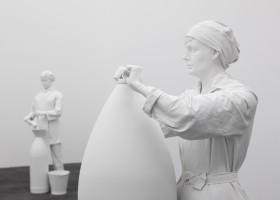




Girls of Chilwell - Suspended Acting (2014), sont trois sculptures réalisées à partir d’archives photographiques de la première guerre mondiale, qui représentent trois temps d’une scène ouvrière de l’usine d’armement de Chilwell, en Angleterre. Ces valeureuses ouvrières, ou munitionnettes, exposées à la manipulation de la nitroglycérine pour le remplissage des obus, avaient notamment comme effets secondaires de cette dangereuse opération, les parties visibles du corps qui jaunissaient, ce qui leur aura valu le nom de « canary girls ». La nitroglycérine était en même temps un puissant vasodilatateur, elles travaillaient donc dans des états seconds, quasi droguées par un apport trop fort en oxygène.
— Ami Barak (extrait du livret de l'exposition Stuttering au CRAC de Sète, 2014)
L’expression « Canary Girls » désigne les femmes qui travaillaient dans les usines d’armement en Angleterre pendant la 1ère Guerre Mondiale. A partir de trois documents photographiques et historiques, l’artiste réalise 3 sculptures en plâtre à l’échelle 1 représentant trois scènes ouvrière de l’usine d’armement de Chilwell qui en 1918 explosera et disparaitra. Les parties du corps humains visibles sont réalisées à partir d’un moulage réaliste et tirage en plâtre (copie) alors que les vêtements ouvriers et accessoires sont dans un premier temps recomposés et rigidifiés avant d’être peints au plâtre.
— Melik Ohanian (Statement extrait du projet de Stuttering au CRAC de Sète, 2014)
Girls of Chilwell - Suspended Acting (2014), is a series of three sculptures based on photography archives from World War One, describing three moments of working scene at Shell Filling Factory in Chilwell, England. The visible limbs of these valorous workers, also known as munitionnettes, handling nitroglycerin to fill the shells, turned yellow as a side effect, earning them the name ‘canary girls.’ The nitroglycerin was at the same time a powerful vasodilator; they therefore worked in a state of trance, virtually drugged by too much oxygen.
— Ami Barak (extract from Stuttering's booklet at CRAC in Sète, 2014)
The expression “Canary Girls” defines those women working in the Shell Filling Factories in Chilwell, England. The factory was destroyed in an explosion in 1918. The artists realizes three sculptures 1:1 proportions, based on working scenes taken from archive photographs and documents . The visible parts of the body are plaster casts of the human body while their dresses and accessories are a first reconstituted and rigidified and then covered with white plaster.
— Melik Ohanian (extract from the statement, Stuttering at CRAC, Sète, 2014)